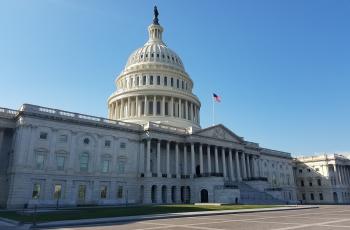Encourage Your Loved Ones to Get Screened for Diabetes!
The US Preventive Services Task Force (USPSTF) has updated its recommendations, encouraging prediabetes and type 2 diabetes screening for people with excess weight or obesity starting at age 35. It also encourages the use of preventive lifestyle interventions when possible.
The US Preventive Services Task Force (USPSTF) last week published its updated approved recommendation on prediabetes and diabetes screening in people who are overweight or have obesity in the Journal of the American Medical Association (JAMA). The task force now recommends that people between the ages of 35 to 70 who have excess weight or obesity (a BMI greater than 25 or 30 respectively) be screened for prediabetes and type 2 diabetes every three years.
Further, if individuals are diagnosed with prediabetes, the new guidelines advise that they be directed toward preventive lifestyle interventions (focused on nutrition and physical activity) or the glucose-lowering medication metformin(though this is not yet FDA-approved for people with prediabetes – you can learn about taking drugs off label here).
The new USPSTF recommendations are an update to the 2015 guidelines, which recommended screenings beginning at age 40 for people with a body mass index (BMI) above 25 (you can find out your BMI using the CDC’s calculator here). The 2015 recommendations focused on identifying unusual blood glucose levels as part of regular heart screening rather than recognizing prediabetes.
The updates are an attempt to identify prediabetes earlier and are based on an evidence report from the task force, also published in JAMA, which found that of the estimated 34 million US adults with diabetes in 2018, about one in five (21%) were undiagnosed, and only 15% were previously diagnosed with prediabetes. Screening and early detection can not only prevent or delay diabetes development but may also prevent diabetes from progressing to a more severe state with other health complications. The CDC estimates that 88 million people in the US have prediabetes and that most of them don’t know it.
Beyond body weight, the recommendations also suggest that healthcare professionals consider other factors for prediabetes screening, including race and medical history. The guidelines recommend screening individuals who belong to racial and ethnic groups showing higher rates of diabetes at younger ages and lower BMIs (in particular for Asian Americans, they recommend screening at a BMI of 23 or greater). Diabetes is most prevalent in indigenous populations (14.7%), followed by Latinx (12.5%), Black (11.7%), Asian (9.2%), and non-Hispanic white populations (7.5%). In addition, screening is suggested for people who have a family history of diabetes, gestational diabetes, or polycystic ovarian syndrome – all of which could increase one’s likelihood of developing type 2 diabetes.
In an editorial article published in JAMA, healthcare leader Dr. Ed Gregg, a professor at Imperial College London, emphasized that there have been no consistent improvements in glycemic control and risk factor management for over a decade. “Along with other evidence of potential stagnation of diabetes care and outcomes, these findings provide important context to the new USPSTF recommendation and warrant a closer look at where the biggest missed opportunities lie and what could be gained with the new screening guidelines.”
If you think a loved one may be at risk for diabetes or prediabetes, talk to them about contacting their healthcare team to ask what screening options they would recommend for them. If you have diabetes, discuss screening with your family and friends who have risk factors.


